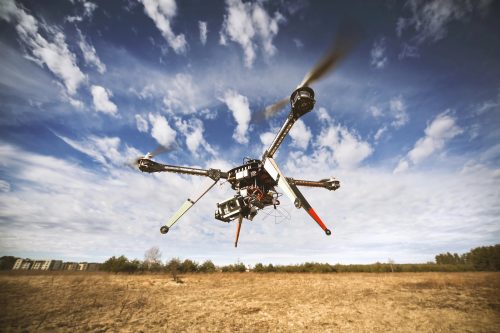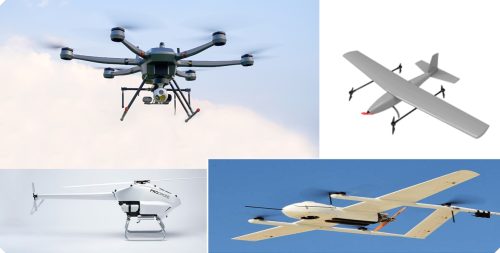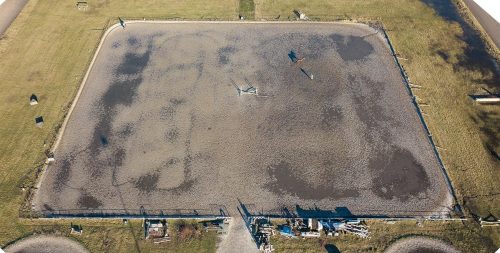Drones, also known as Unmanned Aerial Vehicles (UAVs), have carved a niche in various sectors, transforming everything from aerial photography to in-depth inspections and agricultural monitoring. At AUAV, we have a team of drone pilots and experts dedicated to providing quality drone inspection services making the most of the available technologies.
This article aims to let us showcase our knowledge and dive into the rich tapestry of drone history, exploring significant milestones in UAV technology, and discuss the intricate regulatory landscape in Australia. By understanding the evolution and regulations of drones, businesses can better appreciate their potential and navigate the complexities of drone operations.
The Inception of Drones
The concept of unmanned flight isn’t a product of modern times. The origins of drones trace back to the early 20th century, initially developed for military training purposes.
However, it was during World War II that the first practical applications of remotely controlled aircraft came into play. These early UAVs were essentially radio-controlled aircraft used to train anti-aircraft gunners by simulating enemy aircraft – being a first draft of military drones.
These early iterations were far from the sophisticated unmanned aerial vehicles we see today. They were rudimentary and primarily experimental, but they laid the groundwork for future advancements. As technology progressed, so did the capabilities of UAVs, transitioning from basic radio-controlled unmanned aircraft to more advanced remotely piloted vehicles.
Who Invented Drones? Key Figures in Drone Development
While many have contributed to drone technology, one pivotal figure is Abraham Karem, dubbed the “founding father of UAV technology.” His designs in the late 20th century propelled the use of UAVs from experimental tools to pivotal assets in military and surveillance operations.
Karem’s work significantly advanced the technology, leading to the development of a more sophisticated remotely piloted vehicle that could perform complex missions with minimal human intervention.
Another key milestone was the granting of the first commercial drone permit in the United States in 2006. This permit marked a significant turning point, as it opened the door for the commercial use of drones, transitioning the technology from primarily military applications to a wide array of civilian uses.
This shift was crucial in the development of the commercial drone industry, enabling companies to explore the vast potential of the unmanned aerial vehicle in various sectors.
Evolution of Drone Technology
Drone technology has seen rapid advancements, especially over the last few decades. From bulky, rudimentary models requiring extensive control to sleek, automated systems equipped with AI and other software, drones have dramatically evolved.
Innovations such as high-resolution cameras, autonomous navigation systems, and long-lasting batteries have expanded their use beyond military applications to fields like disaster management, conservation, and urban planning.
The evolution of UAVs has also been marked by the integration of sophisticated sensors and real-time data processing capabilities. Modern drones are no longer just remotely controlled devices; they are advanced unmanned aircraft systems capable of performing a wide range of tasks. This transformation has been driven by continuous improvements in technology, making UAVs more accessible and versatile.
Historical Milestones in UAVs
Significant milestones include the use of UAVs by Israel for real-time surveillance in the 1980s and the adaptation of Predator drones for targeted strikes in the late 1990s. Each milestone not only advanced drone capabilities but also pushed the boundaries of how and where drones could be deployed.
The transition from manned aircraft to remotely piloted vehicles for specific missions was a significant step forward. It demonstrated the potential of UAVs to perform tasks that were either too dangerous or impractical for human pilots.
This shift was further accelerated by the development of the first commercial drone permit, which allowed for the use of UAVs in civilian airspace for various applications.
A Look Back at Drone History in Australia
Being an Australian drone inspection company, we value the great history of drones within our country as well.
The first authorised drone company founded in Australia was Aerosonde – a Melbourne-based business established in 1995. Their original Aerosonde Mk1 drone was designed in the same year to be capable of applications in the meteorological and environmental sectors.
This initial model was able to reach a 6,000-meter altitude and have a flight-time of over 30 hours. It was also the first UAV to cross the Atlantic Ocean, making the journey in just under 27 hours on only 4kg of fuel.
They continued to innovate and evolve their technology with the Mk2 in 2003 and the Mk3 and Mk4 coming soon after that.
Aerosonde have continued to provide their UAVs with quality performance in all environments – something we strive for ourselves here at AUAV.
Regulatory Framework for Drones in Australia
In Australia, the Civil Aviation Safety Authority (CASA) governs drone regulations to ensure safety without stifling innovation. These regulations have evolved to address the increasing use and capabilities of UAVs, focusing on operational limits, no-fly zones, and the privacy of citizens.
Recent updates have introduced categories based on drone weight and usage, streamlining compliance for commercial operators.
Australia’s regulatory framework for drones has been instrumental in balancing the benefits of UAV technology with the need for public safety and privacy. CASA’s regulations cover various aspects of drone operations, from licensing requirements for commercial operators to guidelines for recreational users.
The introduction of rules for remotely piloted vehicles has provided a clear structure for businesses looking to integrate UAVs into their operations.
The Future of Drone Technology and Inspections
The future of drones in commercial inspections looks promising, with continuous advancements in sensor technology and data analytics. UAVs are becoming increasingly integral to industries such as agriculture, construction, and infrastructure management. Their ability to collect detailed data and perform inspections in hard-to-reach areas makes them invaluable tools.
AUAV’s inSite software is at the forefront of these developments, offering precise, efficient inspection data, revolutionising how industries assess and manage their infrastructure. The integration of advanced analytics and real-time reporting capabilities enhances the value of drone inspections, providing actionable insights that drive decision-making processes.
Why Choose AUAV for Drone Services
AUAV has established itself as a leader in the drone services industry, backed by a team of experts versed in the latest technological and regulatory updates. With a fleet of sophisticated drones and proprietary software like inSite, AUAV offers unmatched quality in aerial inspections, mapping, and data analysis, making them the preferred choice for businesses across Australia.
Choosing AUAV means partnering with a company that understands the complexities of drone regulations and the unique challenges of various industries. Their comprehensive services and commitment to excellence ensure that clients receive the highest quality results, whether for routine inspections or complex data collection projects.
AUAV: Australia’s Drone Inspection Specialists
Understanding the history and regulations of UAVs is crucial for anyone looking to leverage drone technology in Australia.
With comprehensive knowledge and cutting-edge solutions, AUAV stands ready to assist businesses by utilising drones for a suite of asset inspection services. By staying at the forefront of technological advancements and regulatory compliance, AUAV continues to set the standard in the drone services industry.
Explore the potential of drones for your business with AUAV. Contact us today to learn more about our services and how our innovative solutions can be tailored to meet your specific needs.




